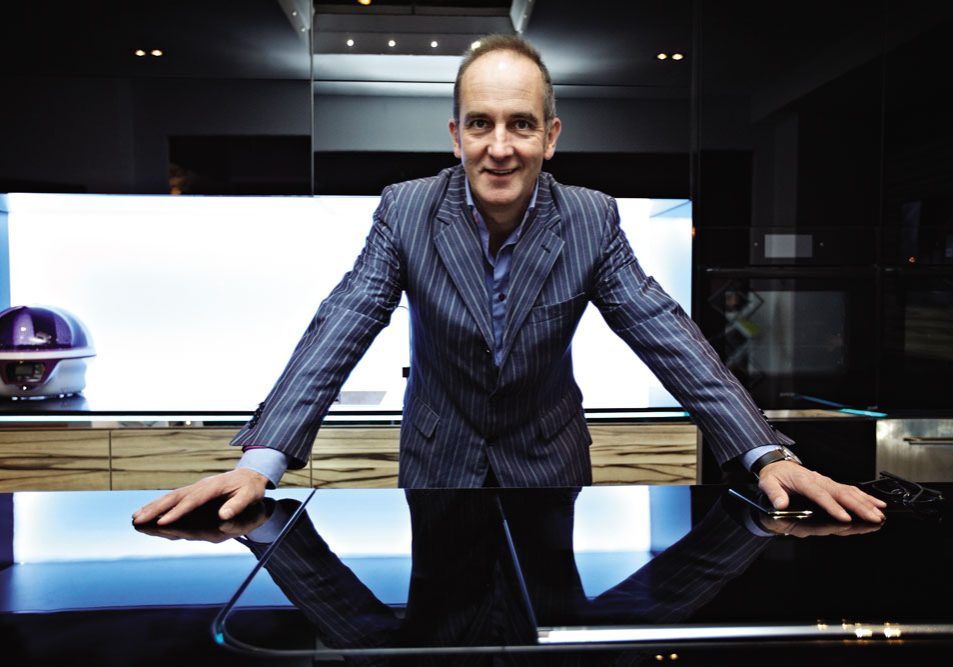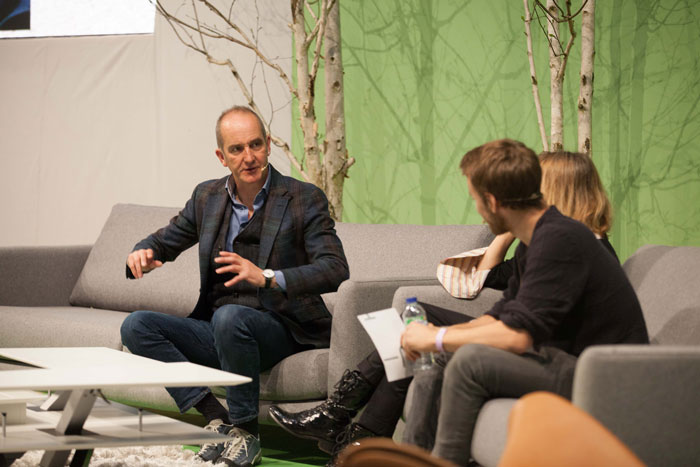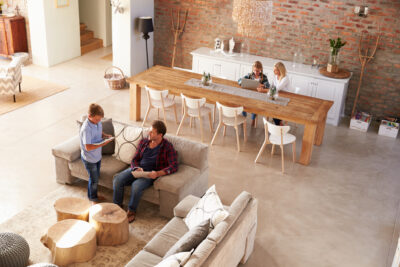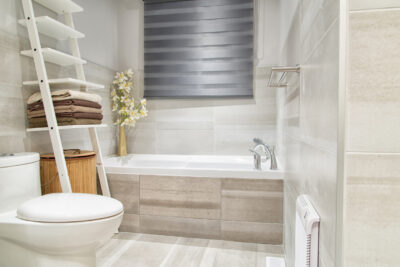
Exclusive interview with Grand Designs’ Kevin McCloud
by Northern Life
“Our kids are going to inherit a world that is increasingly getting warmer, drier and with more volatile weather."
Kevin McCloud is best known for presenting Channel 4’s Grand Designs. The show has been on our screens for almost 20 years and now boasts a Grand Designs magazine and an exhibition, Grand Designs Live. We caught up with Kevin ahead of the new series of the show to find out what we can look forward to, how we can be more eco-friendly and why the pub is the most important part of the entire show-making process!
Best known for his flagship show, Grand Designs, Kevin McCloud has been a staple on British television for almost 20 years as he follows hopeful and ambitious builders design and build their dream home. Grand Designs is one of Channel 4’s biggest series and now, in its 19th year, is nothing short of a global phenomenon with books, a monthly magazine, architectural awards and a live exhibition, Grand Designs Live, which returns this October to the Birmingham NEC.
“My job is not to walk around getting excited, it’s to translate to the viewer and get them to feel excited”
“It’s an intimate affair and we’ve coincided it with the television series meaning there’s a bit more immediacy to it,” smiles Kevin. “We’ve got a really busy theatre programme and lots of manufacturers exhibiting so it’s very much in the spirit of the television programme. It’s a great, diverse day out.”
The exhibition is going plastic free and Kevin and the organisers are trying to encourage people to bring their own bottle to fill up at the provided taps and will not be selling bottled water or plastic cutlery. More and more of us are opting to go plastic free, particularly after seeing the effects on shows such as David Attenborough’s Blue Planet II. Kevin is passionate about the environment and thinks we all need to do what we can:
“Our kids are going to inherit a world that is increasingly getting warmer, drier and with more volatile weather. The biodiversity of this country is collapsing and although our fields may look green and pleasant, they’re becoming increasingly sterile. The areas in which wildlife flourishes are really small and increasingly isolated so we need to re-green our countryside as much as we need to repopulate it with the biodiversity.” Kevin sighs, “It’s the single biggest threat to our species and to our future happiness and it’s not three or four generations away, it’s in the next thirty years, it’s now.”

But how do we make our lives and indeed our homes more environmentally friendly? Kevin believes it’s down to all of us to change:
“Society needs to make some major lifestyle changes. Electric cars, less consumption of materials and a circular economy where we take our waste and make stuff out of it. We need to change how we live, who we are and how we fit into the world as a species.” He adds, “I keep banging on about insulation and draft proofing but that doesn’t solve anything. The only way this is going to work is if, collectively, as a society we change – enjoy a beer but make sure it’s locally brewed from a small, local producer who you might even meet in the pub and have a great conversation with. You’re not going to do that with a manufacturer of a lager made in a factory in Stoke-On-Trent. It’s about being thoughtful, responsible and making lifestyle changes that respect the legacy our kids will inherit.”
It’s no wonder listening to Kevin’s obvious passion that we’re seeing more and more eco-friendly properties being built on Grand Designs. There’s been a wide range of homes built on the show and I wonder which for Kevin has been the most memorable?
 “Gosh! Well bringing it back to beer, I remember so many projects for so many reasons and they’re not the reasons that the viewer might think are important! I’ll think that a project was fantastic because half a mile down the road there was amazing pub for lunch!” He chuckles, “the pub is an important part of our work, it’s where we break for lunch as my working life is spent on the road going to beautiful places with memorable people. We did a project on the Isle of Skye – it was a small two bedroom wooden house designed by a local architect built in a beautiful summer in 2012. When the rest of the country was in mud and rain, Skye was in blistering sunshine. The stars all aligned on that project – it was a beautiful place and a memorable time and you can’t always say that about your job can you?”
“Gosh! Well bringing it back to beer, I remember so many projects for so many reasons and they’re not the reasons that the viewer might think are important! I’ll think that a project was fantastic because half a mile down the road there was amazing pub for lunch!” He chuckles, “the pub is an important part of our work, it’s where we break for lunch as my working life is spent on the road going to beautiful places with memorable people. We did a project on the Isle of Skye – it was a small two bedroom wooden house designed by a local architect built in a beautiful summer in 2012. When the rest of the country was in mud and rain, Skye was in blistering sunshine. The stars all aligned on that project – it was a beautiful place and a memorable time and you can’t always say that about your job can you?”
But while Kevin’s undoubtedly had some great experiences he’s also had some pretty dire ones:
“The house boat that never finished, the house in Spain that looked like a giant toad… my most disappointing projects are the ones where people run out of money because that becomes the story and it’s so flat. I don’t like it when things go wrong, I like it when things go right as that’s when we get the richest, most diverse stories.”
But that doesn’t mean you can’t build a house on a lemonade budget…
“Whether you’re spending three million or £150,000 or less, it’s all about the idea and the ambition. The great excitement about this series is people trying stuff out that no one has done before – for example a building for £200,000 that should cost more or pushing simple architectural ideas. Small projects, for me, are always the best. Anybody with loads of money can build a big, amazing house, that’s easy; the hard part is getting something beautiful, stimulating and exciting. Architecture is not about big, it’s not about bling, it’s about delivering experiences that are timeless. We’re looking for originality, to push ideas… the word ‘grand’ refers to the idea, not the money.”
With many people in the UK struggling to afford a home, much less build one and a generation nicknamed, ‘Generation Rent’ as well as a rise in homelessness, I wondered what Kevin’s views on the housing crisis in the UK were and whether he felt the government needed to do more to ensure everyone has a roof over their head?
“We haven’t just got a housing crisis, we have a crisis in planning, quality, manpower, skills, construction and a crisis of affordability too.” He sighs, “In the 1950s if you wanted a house you could choose to buy, choose to rent from a landlord or you could choose to rent from the council. Renting from the council did not have a social stigma attached to it – people were really proud of being able to rent a council house and live in a great quality, spacious dwelling.
“I think we’ve moved into a harder world where we tend to ‘ghettoise’ social housing and that’s got to stop. We have to celebrate it as a key, important investment. A friend of mine says every age will be judged by the quality of education, healthcare and housing and on the housing front, we’re not doing well at all.”
 Kevin is an eloquent man and it’s obvious that his almost Shakespearean summaries on Grand Designs aren’t just a fluke:
Kevin is an eloquent man and it’s obvious that his almost Shakespearean summaries on Grand Designs aren’t just a fluke:
“I’m going to admit something here which is maybe a bit of a surprise…” He laughs, “You go visit a building – what’s the maximum time you spend in there before you want a cup of coffee or a walk somewhere else or a chat over lunch? I expect two hours. We’re in the homes from eight in the morning and spend the whole day there so the only way to do it is to do it in little segments. I don’t take a tour of the house – I save myself and do it in little pieces. If I walk into a building my natural reaction is ‘wow’ or I might say ‘f*** me’ but I can’t say that on television!
“So I just wander in, even if it’s with a few minutes’ notice. My job is not to walk around getting excited, it’s to translate to the viewer and get them to feel excited.”
Kevin has seen a number of houses over the years – is there a housing must have for Mr Design himself?
“I’m nearly 60 and quite deaf so I’ve got one of those big speakers!” He jokes, “I love that quote from William Morris – ‘have nothing in your house which you know not to be useful or believe to be beautiful’ – it’s about the thing that means something to you. The historic object your Mother gave you. The one thing that disappoints me when I walk into a new home is all new furnishings from an online store – it’s a lack of personality. Autobiography is really important in design. I’m going to criticise what we do for a living now but we show these beautiful things, we know it’s styled and we know what the photographer is doing and we love admiring it but the danger comes if householders believe that our homes have to look like that as opposed to having the conviction of objects in our life that really mean something – we shouldn’t abandon those because we want our houses to look like a magazine spread.”




